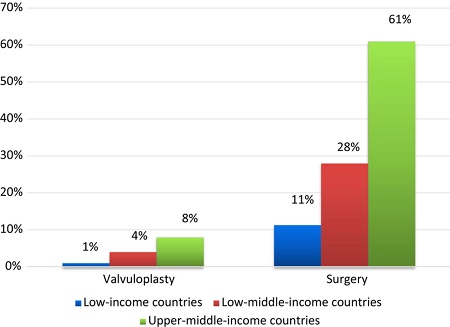Using AI to control energy for indoor agriculture
30 September 2024
Published online 10 December 2014

© Zühlke, L. et al./European Heart Journal
Enlarge image
New research has provided insight into how rheumatic heart disease (RHD) continues to spread aggressively among children and young women in low- and lower-middle-income countries in Asia and Africa.
The study published in European Heart Journal1, reveals that RHD mostly affects children and young women, who develop complications such as congestive heart failure, disrupted cardiac rhythm and dilated left ventricles.
To date, there hasn’t been enough systematic data on the characteristics, treatments, complications and long-term effects of RHD. In an effort to change this, the researchers from University of Cape Town, South Africa, University of Sana’a, Yemen, and Cairo University Children’s Hospital, Egypt studied RHD patients in low-income countries (Ethiopia, Kenya, Malwai, Uganda and Zambia), lower-middle-income countries (Egypt, Sudan and Yemen) and upper-middle-income countries (Namibia and South Africa).
The researchers discovered that the majority of the patients suffered from moderate-to-severe multivalvular disease – affecting different valves in the heart.
Some differences in disease levels were apparent when comparing the data from different countries. For example, the percentage of children with decreased left ventricular ejection fraction, which measures how much blood is being pumped out of the left ventricle of the heart, was lowest in upper-middle-income countries.
The study identified an inadequately low use of penicillin for preventative treatment in nearly half of the patients. The study also revealed that 20% of the RHD-affected pregnant women took warfarin, an anti-coagulant drug that is harmful to fetal health.
“Prevalence and complications of RHD can be reduced by resorting to cheap preventive therapies such as proper use of penicillin in children and women, and particularly contraceptives in women of child-bearing age,” said Bongani Mayosi, a senior author of the study.
doi:10.1038/nmiddleeast.2014.278
Stay connected: